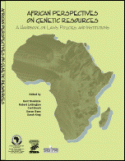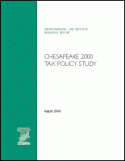
Research Reports
ELI publishes Research Reports available for free download that present the analysis and conclusions of the policy studies ELI undertakes to improve environmental law and policy. These reports contribute to education of the profession and disseminate diverse points of view and opinions to stimulate a robust and creative exchange of ideas. Those publications, which express opinions of the authors and not necessarily those of the Institute, its Board of Directors, or funding organizations, exemplify ELI’s commitment to dialogue with all sectors.
Researchers developing innovative solutions to some of the world's most pressing problems - disease, hunger, and poverty - rely on access to genetic resources. Regulating the conservation, use, and exchange of these resources - who has access to them under what circumstances, who has the right to benefits accrued through their use, how they are conserved - is a complicated process, and many nations lack adequate laws and policies. This book examines how 12 African nations are meeting this challenge and provides a resource for nations to develop a common policy framework.
Read More >
Conservation Thresholds for Land Use Planners provides a review and synthesis of information from the most up-to-date scientific literature to provide basic thresholds to land use planners to rely upon when making decisions affecting biodiversity. With more than 1,400 papers and abstracts reviewed for the project and a total of 160 papers selected for inclusion in the review, the report covers conservation thresholds on habitat patch area, percent suitable habitat, edge effects, riparian buffers, and corridors.
Read More >
Issues Relating to Articles 14 and 15 of the North American Agreement on Environmental Cooperation analyzes recent Commission on Environmental Cooperation (CEC) Council resolutions that limit public review and hinder the citizen submissions process of the North American Agreement on Environmental Cooperation. The report finds that, by limiting the scope of investigation in each of the records examined, the Council jeopardized the ability of the citizen submitters to fully expose the controversy at issue.
Read More >
Green building involves the early and integrated consideration of environmental and health strategies such as superior indoor air quality, resource efficiency, daylighting, and sustainable materials. Green building can support the educational mission of school districts by promoting the health, learning, and productivity of students and staff, and by reducing utility costs and other facility expenses.
Read More >
The Chesapeake 2000 Tax Policy Study is designed to identify tax policies thatmay affect the parties' abilities to meet the sound land use goals of the Agreement.
Read More >